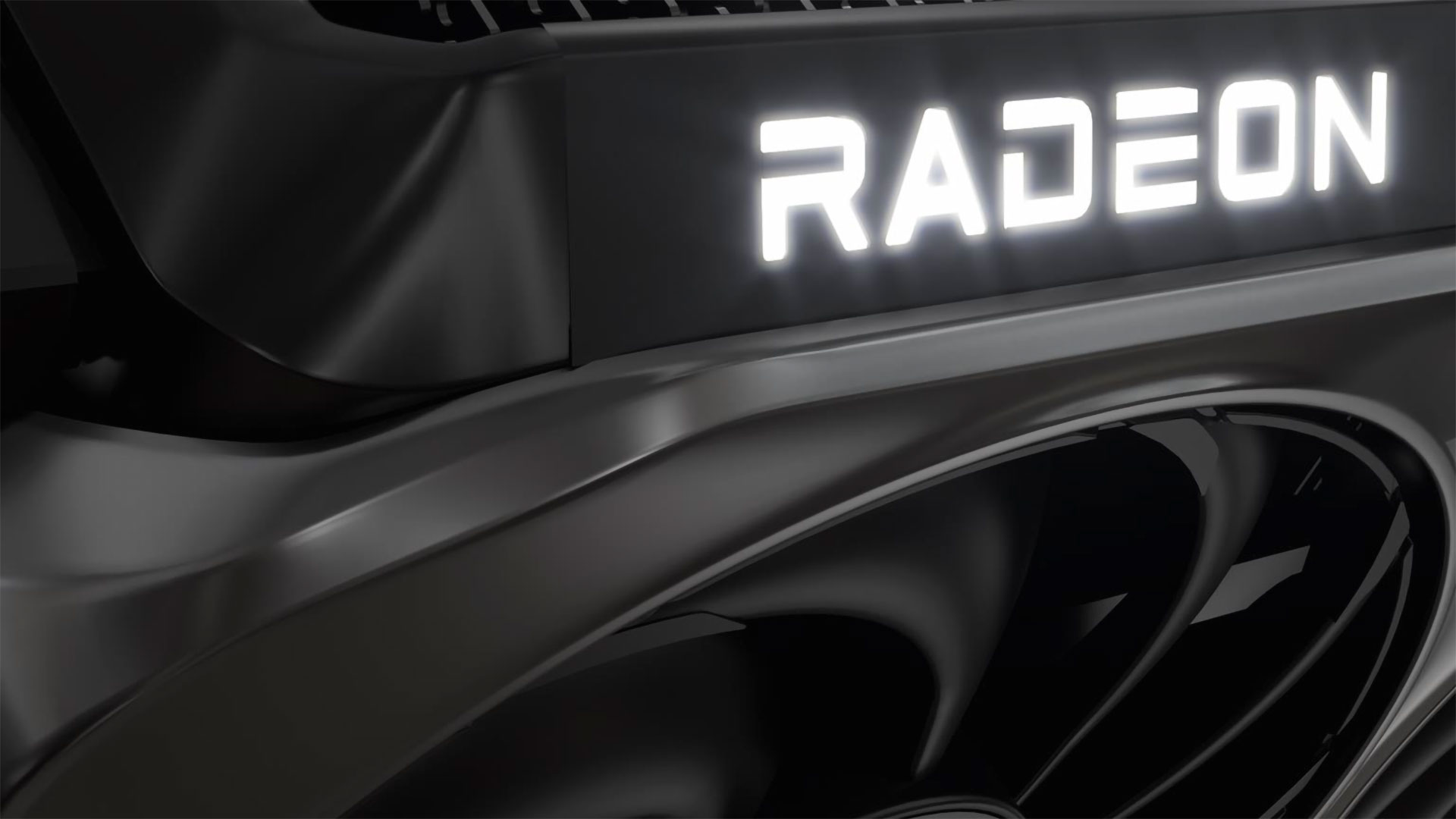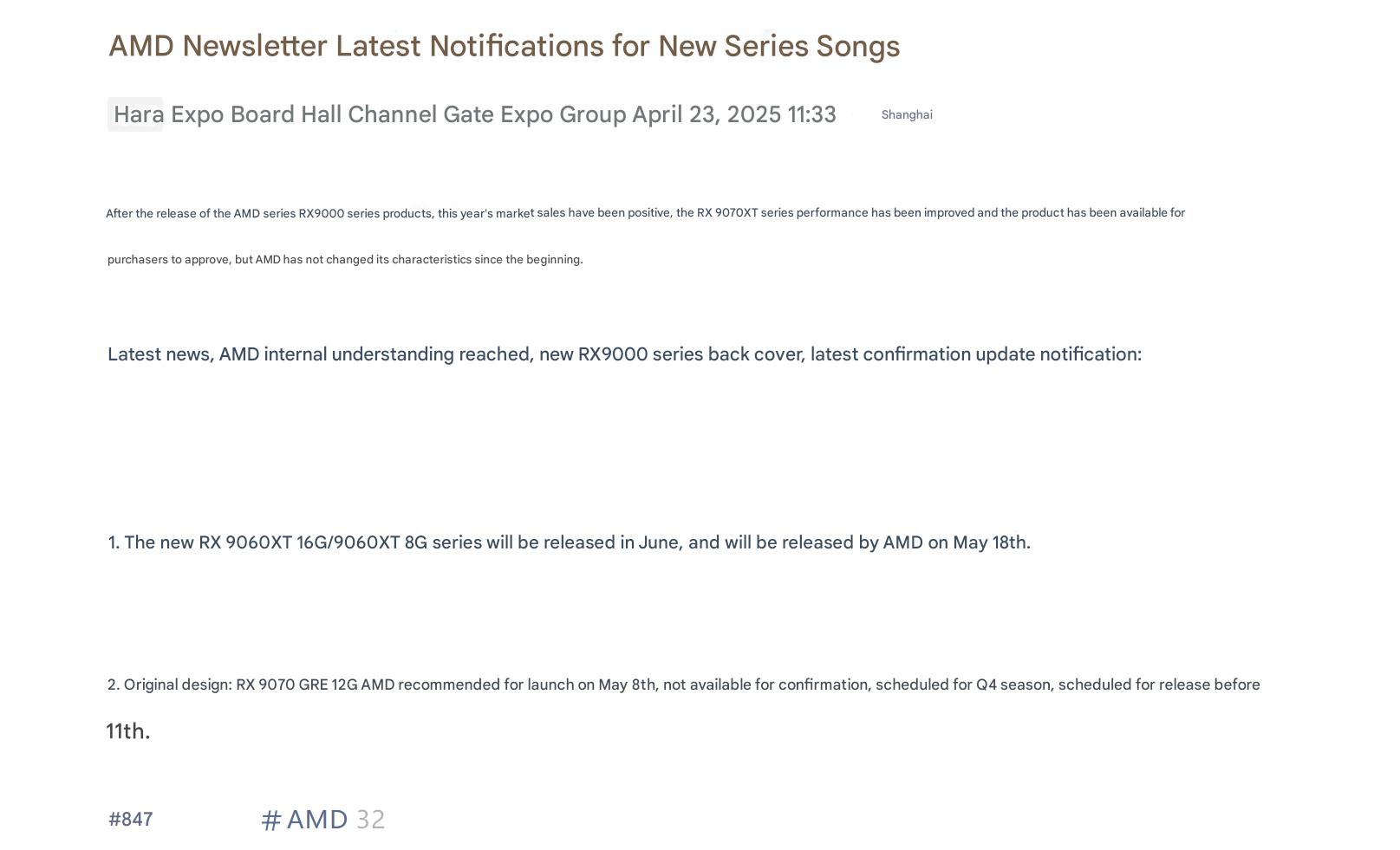Originallyanticipatedby early June, a new rumor suggests that AMD’sRX 9060 XTGPUs could hit shelves on May 18, a shift of around two or three weeks. This leak originates fromBoard Channels, a network of sources allegedly linked to board partners. The same source also claims theRX 9070 GRE, a recurring subject in many leaks nowadays, has, purportedly, been pushed back to the fourth quarter, and we might have a good explanation for that.
AMDupdatedits RDNA 4 nomenclature to align with Nvidia’s “X0X0” convention, probably to simplify customer understanding, even if it comes at the expense of its original identity. The RX 9060 XT family willreportedlyoffer 8GB and 16GB memory configurations, shifting to the budget Navi 44 die with 2,048 shaders (32 CUs) and clock speeds north of 3 GHz.Leaked specificationssuggest the RX 9070 GRE, on the other hand, is equipped with a cut-down Navi 48 die packing 3,072 shaders (48 CUs) and a 12GB frame buffer.

Despite initially beingsuggestedfor aComputexreveal, followed by a launch in early June, Board Channels alleges that AMD is expediting the RX 9060 XT for launch just before Computex. By launch, we’re assuming the source refers to on-shelf inventory. More interestingly, the mid-range RX 9070 GRE is apparently delayed from early May to October or November, just before 11.11 (Singles' Day in China), the largest online and offline shopping event globally.
Let’s address the elephant in the room: the RX 9060 XT 8GB. Across various resolutions, including 1080p and 1440p, there’s asizeable performance gapbetween theRTX 5060 Ti8GB and 16GB. And let’s not forget that Nvidia’s use of GDDR7 can alleviate potential memory bottlenecks, a luxury AMD does not have this generation.

This could have been the perfect opportunity for AMD to hit Nvidia where it hurts: memory capacity. The growing need for more video memory might incentivize consumers to cough up more dollars for the 16GB model. It makes me wonder why the 8GB model exists in the first place, considering the overlap with a potential RX 9060 non-XT.
The RX 9070 GRE, on the other hand, is reportedly built using binned Navi 48 dies, or to be precise, dies with 25% fewer shaders. Due to the maturity of TSMC’s N4 process, achieving a large volume of significantly cut-down Navi 48 GPUs might be difficult. One possibility for the sudden change in plans is that the RX 9070 GRE is now aimed for a global launch, and AMD is taking time to procure the necessary volume of binned GPUs, but that’s just speculation.

FollowTom’s Hardware on Google Newsto get our up-to-date news, analysis, and reviews in your feeds. Make sure to click the Follow button.
Get Tom’s Hardware’s best news and in-depth reviews, straight to your inbox.
Hassam Nasir is a die-hard hardware enthusiast with years of experience as a tech editor and writer, focusing on detailed CPU comparisons and general hardware news. When he’s not working, you’ll find him bending tubes for his ever-evolving custom water-loop gaming rig or benchmarking the latest CPUs and GPUs just for fun.